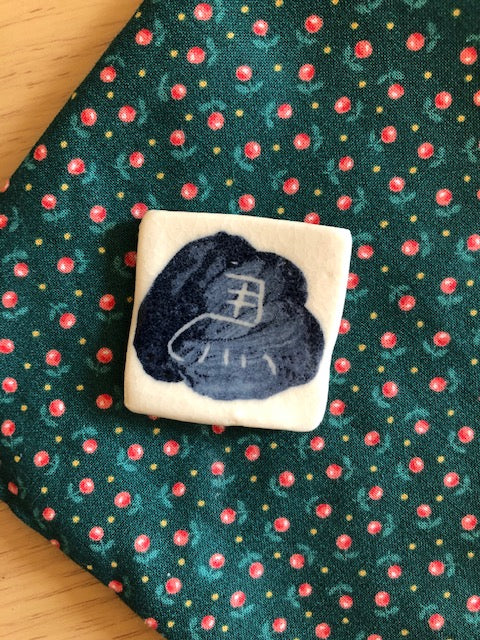In Japan, in the world of ceramics, there is a tradition of making the first firing of a new kiln by firing pieces with the character of a horse but written from right to left, in the opposite direction of how it would normally be done.
There are several reasons for this decoration:
Since ancient times, the horse is said to be an animal of good fortune and health.
The origin of this is that horses have the habit of falling off if they are ridden on the right, so they are always ridden on the left. Therefore, the left side of the animal means that the horse will not fall and that the rider will be able to live a life without major mishaps.
The opposite of the word "horse" in Japanese is "mau" (dance), and as dances have been performed on festive occasions since ancient times, it is believed that the horse riding on the left is an auspicious symbol that attracts prosperity, many customers and good business.
The lower part of the "horse" character resembles the shape of a kinchaku, a traditional Japanese purse, so it is considered an auspicious character to invite money. This purse has a closed mouth so that the money it contains does not escape.
In addition, the horse is pulled by a person, but as the horse is inverted, it is considered a symbol of wealth. It is believed to be related to prosperous business because the horse attracts people (i.e. invites them in), which is the opposite of the usual.
That is why when a kiln is first started up, it is filled with pieces with the character "left horse" written on them. Thus, it calls for the prosperity of the business through good health and many customers. These pieces are distributed among the neighbours of the workshop and the people who have helped to make the business possible.
Here is a link to a video of the process of making our magnets with the "left horse" painted on them. We gave them to the people who live or work near our workshop and to the family and friends who have helped us build Tougei Tocoton.
We thank especially professor Ohara, the person who told us about this beautiful tradition.
ESPAÑOL
El caballo zurdo
En Japón, en el mundo de la cerámica, hay la tradición de hacer la primera hornada de un horno nuevo cociendo piezas con el carácter de caballo, pero escrito de derecha a izquierda, en la dirección contraria de como ser haría normalmente.
Hay distintos motivos que explican el porqué de esta decoración:
Desde la antigüedad, se dice que el caballo es un animal de buena fortuna y salud.
El origen de esto es que los caballos tienen la costumbre de caerse si se les monta por la derecha, por lo que siempre se les monta por la izquierda. Por eso el lado izquierdo del animal significa que el caballo no se caerá y que el jinete podrá vivir una vida sin mayores percances.
El opuesto de la palabra caballo en japonés es "mau" (danza), y como las danzas se realizan en ocasiones festivas desde la antigüedad, se cree que el caballo que se dirige a la izquierda es un símbolo auspicioso que atrae la prosperidad, a muchos clientes y a los buenos negocios.
Además, la parte inferior del carácter de caballo se asemeja a la forma de un kinchaku, un bolso tradicional japonés, por lo que se considera un carácter auspicioso para invitar al dinero. Este bolso tiene la boca cerrada para que el dinero que contiene no se escape.
Además, el caballo es tirado por una persona, pero como el caballo está invertido, se considera un símbolo de riqueza. Se cree que está relacionado con los negocios prósperos porque el caballo atrae a la gente (es decir, la invita a entrar), que es lo contrario de lo habitual.
Es por eso que cuando se pone en marcha un horno por primera vez, se llena de piezas con el carácter del caballo zurdo escrito en ellas. Así, se llama a la prosperidad del negocio mediante una buena salud y muchos clientes. estas piezas se reparten entre los vecinos del taller y la gente que ha ayudado a que el negocio fuera posible.
Aquí tenéis un enlace para ver el video del proceso de elaboración de nuestros imanes con el caballo zurdo pintado en ellos. se los dimos a la gente que vive o trabaja cerca de nuestro taller y a la familia y amigos que nos han ayudado a construir Tougei Tocoton.
Damos las gracias, especialmente a la profesora de cerámica Ohara, la persona que nos contó esta tradición tan bonita.

